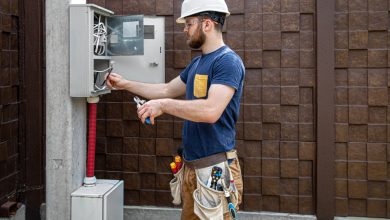Tactile Pavement – A Few Interesting Facts to Learn About

Tactile pavement uses domes, raised lines, and other textures to send across information regarding the safety, especially to those who are visually challenged or completely blind. Any lines or large domes serve as a sign for stop, whereas lines or smaller dots suggest that the path is safe to walk on tactiles.
Many countries use tactile pavement is found in both indoor and outdoor environment.
In the 1960s, a Japanese inventor called Seiichi Miyake invented this tactile paving, also known as tenji bricks. In 1965, he devised the concept of tactile pavement to assist a vision-impaired buddy in navigating public venues, train stations, and stairwells.
On March 18, 1967, the tactile pavement was initially laid in Okayama City, and a year later, it was deemed necessary for every rail station. OLEJÁR is one Slovak manufacturer, who has turned out to be a leading expert of tactiles and its related products.
The following are the public places where such tactile will be found installed.
- Railway platforms – Such warning TGSI’s are normally used on the railway platform edges to offer safety, and these directional TGSI’s can offer a valuable way to provide wayfinding info.
- Stairways – For reducing any risk of fall and hazards, especially stairs with certain irregular steps or where handrails are not provided.
- Escalators – For deciding where the escalator will start and then end
- Passenger conveyors – For alerting to the moving travelator approach
- Ramps – For areas having a sudden incline change
- Areas that may lack proper barriers – Those hazards that may not be protected by any railings or any other purpose-built barriers, etc.
- Pedestrian crossings – For indicating where any safety crossing starts and ends.
Why these tactile pavements are brightly colored?
You will find most tactile pavement, especially in outdoor situations, is in many different colors from all other paths. This is to enable folks who have a lower vision or have some vision issue can see properly where the path will be by increasing the contrast.
This is especially useful for persons who may not be using canes or any other mobility aids and have eyesight issues.
Who benefits from the tactile pavement?
People with vision problems like blindness and very low vision can take advantage of the tactile pavement. These pavements allow persons to travel independently and securely while offering critical information on safety in a non-visual approach.
Individuals who are preoccupied with something may also find tactile pavement beneficial, as they may feel the lines or dots by under their feet while they continue walking.
When using any cane, how does this tactile pavement feel?
When we go out on our college campus, we use a spinning marshmallow or certain ball tip cane since it can provide a mix of aural and tactile feedback to us and is highly sturdy.
It seems like a certain speed bump as our cane slides across any tactile pavement dots, signaling that we need to pay extra attention before crossing the street or continuing to navigate.
The more delicate pattern make us feel like we are walking over a bubble wrap or small grate and we think we can benefit from using an additional navigation app or tool.
Author: Siddhi Chothani





